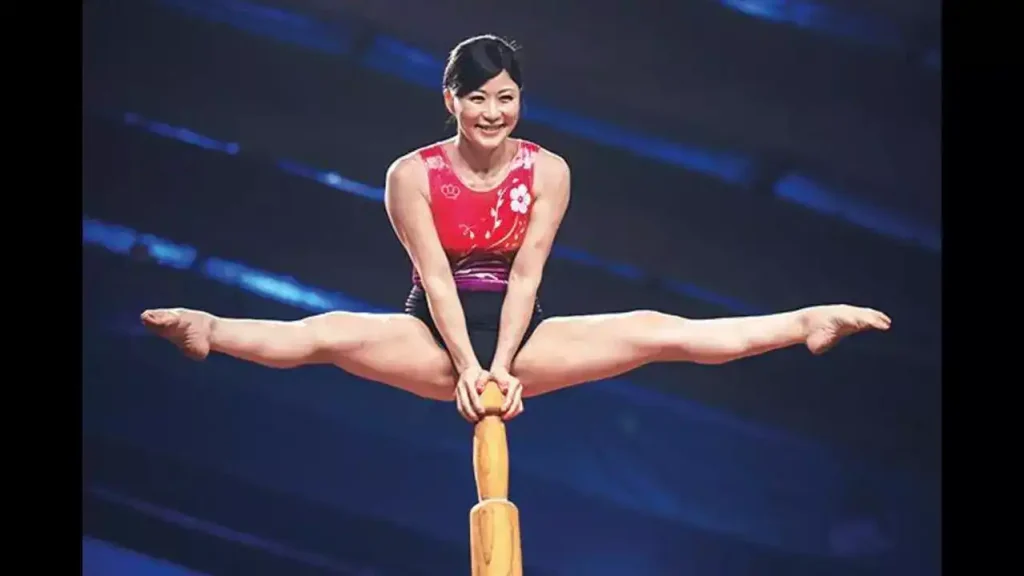Imagine a sport in which athletes swing, flip, and balance their entire bodies on a wooden pole or rope! Sounds exciting, right? Mallakhamb is a traditional Indian sport that combines elements of gymnastics, wrestling, and yoga. Let’s explore the history, rules, techniques, and benefits of this fascinating sport.

What is Mallakhamb?
Mallakhamb (or Mallakhamba) is an ancient Indian sport where athletes perform acrobatic and gymnastic movements on a vertical wooden pole, a hanging rope, or a cane. The name comes from two Sanskrit words: ‘Malla’, meaning wrestler, and ‘Khamb’, meaning pole. So, it essentially translates to ‘wrestler’s pole’.

Mallakhamb is known for improving flexibility, strength, endurance, and mental focus. It requires balance, coordination, and courage as athletes perform daring stunts on a narrow pole or rope.
The History of Mallakhamb
Mallakhamb has a history dating back over 800 years! It was first mentioned in the 12th-century text Manasollasa, written by King Someshvara III of Karnataka. However, the modern revival of Mallakhamb happened in the early 19th century.

During this time, Balambhatta Dada Deodhar, a trainer of Peshwa Bajirao II in Maharashtra, used Mallakhamb as a training method for wrestlers. Over time, it evolved into an independent sport that gained popularity in India and beyond.

Today, Mallakhamb is recognised as a competitive sport with national and international championships held regularly.

Types of Mallakhamb
There are three main types of Mallakhamb:
- Pole Mallakhamb: The most popular form, where athletes perform on a vertical wooden pole fixed to the ground.

- Rope Mallakhamb: In this type, athletes perform stunts on a hanging cotton rope.

- Hanging Mallakhamb: The wooden pole is suspended in the air using chains, adding an extra challenge!

Each type requires unique techniques and skills, making Mallakhamb a versatile sport.
Rules and Techniques
In Mallakhamb, athletes are judged based on:
- Difficulty level of their moves
- Execution and control
- Balance and flexibility
- Creativity and transitions between poses

Some common techniques include:
- Aramandi – A basic pose where the athlete balances on the pole with minimal support.

- Padmasana Pose – A lotus pose performed while hanging upside down.

- Knee Lock – Using only the knees to grip the pole.

- Horizontal Stretch – Extending the body horizontally while gripping the pole.

Mallakhamb requires immense body control, and each routine is a combination of different poses performed gracefully.
Benefits of Mallakhamb
Playing Mallakhamb has several physical and mental benefits:

- Improves Strength: Holding your body weight on a pole or rope develops strong muscles.
- Enhances Flexibility: Athletes stretch and bend their bodies, increasing their flexibility.
- Boosts Balance and Coordination: Since Mallakhamb requires precision, it helps in improving body control.
- Increases Focus and Confidence: The sport teaches patience, concentration, and confidence in one’s abilities.
- Provides a Full-Body Workout: Unlike other exercises that focus on specific muscles, Mallakhamb trains the entire body.
Mallakhamb in Modern Times
Although it originated in India, Mallakhamb is now gaining recognition worldwide. Many countries, including the USA, Germany, and Japan, have started practising this sport.

In 2019, Mallakhamb was showcased as a demonstration sport at the Khelo India Youth Games, sparking interest among young athletes. Efforts are being made to include it in global multi-sport events.

The sport has also found a place in yoga and fitness routines, with many fitness trainers using it as a workout method.
Famous Mallakhamb Athletes
Several Mallakhamb athletes have gained international fame, including:
- Shivaji Lotan Patil – A legendary Mallakhamb performer known for his agility and unique moves.
- Vijay Bhaskar Shetty – A champion who has helped promote Mallakhamb globally.
- Dipa Karmakar – Though known for gymnastics, she has also trained in Mallakhamb to enhance her skills.

These athletes have inspired many young players to take up this traditional sport.
How to Get Started with Mallakhamb?
If you’re interested in trying Mallakhamb, here’s how you can begin:
- Find a Mallakhamb Training Centre: Many sports academies in India offer Mallakhamb training.

- Wear Comfortable Clothing: Since it involves a lot of gripping, athletes usually wear shorts and t-shirts.

- Start with Basic Exercises: Strength-building exercises like push-ups, planks, and stretches will help prepare your body.

- Learn Under a Trained Instructor: A good coach will ensure that you perform safely and correctly.

- Practice Regularly: Like any sport, practice makes perfect!

Mallakhamb is open to everyone, regardless of age or experience. If you love adventure, flexibility, and strength training, this could be the perfect sport for you!
Conclusion
Mallakhamb is not just a sport; it’s an art form that blends fitness, tradition, and discipline. It showcases the strength and agility of the human body while preserving India’s rich cultural heritage. Whether you want to become a professional athlete or just improve your fitness, Mallakhamb is a fun and exciting sport to try.

Would you like to give it a shot? Let us know in the comments!
For more interesting Story, please visit www.kidzherald.com




